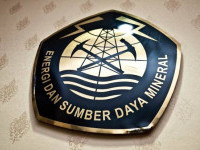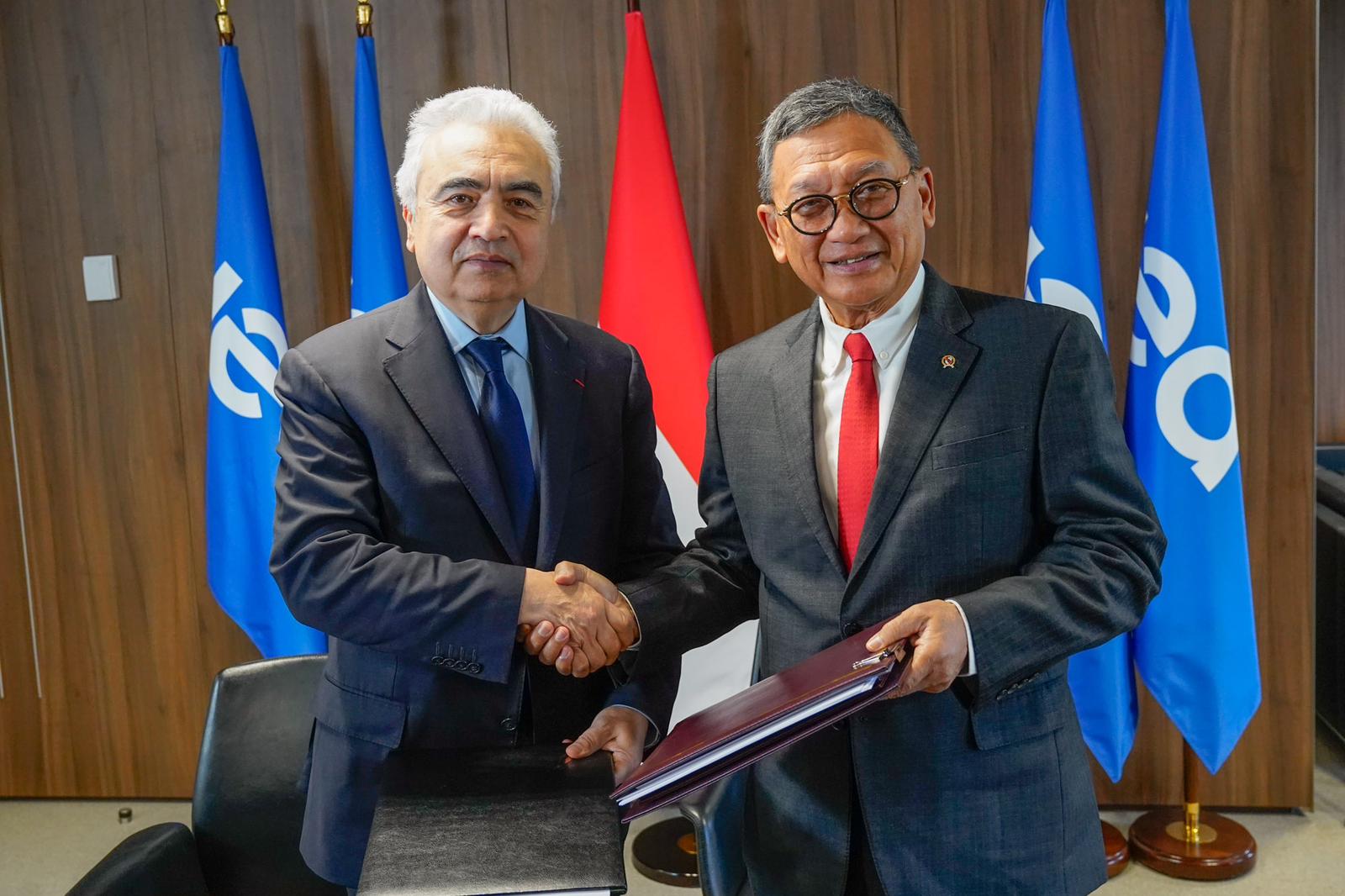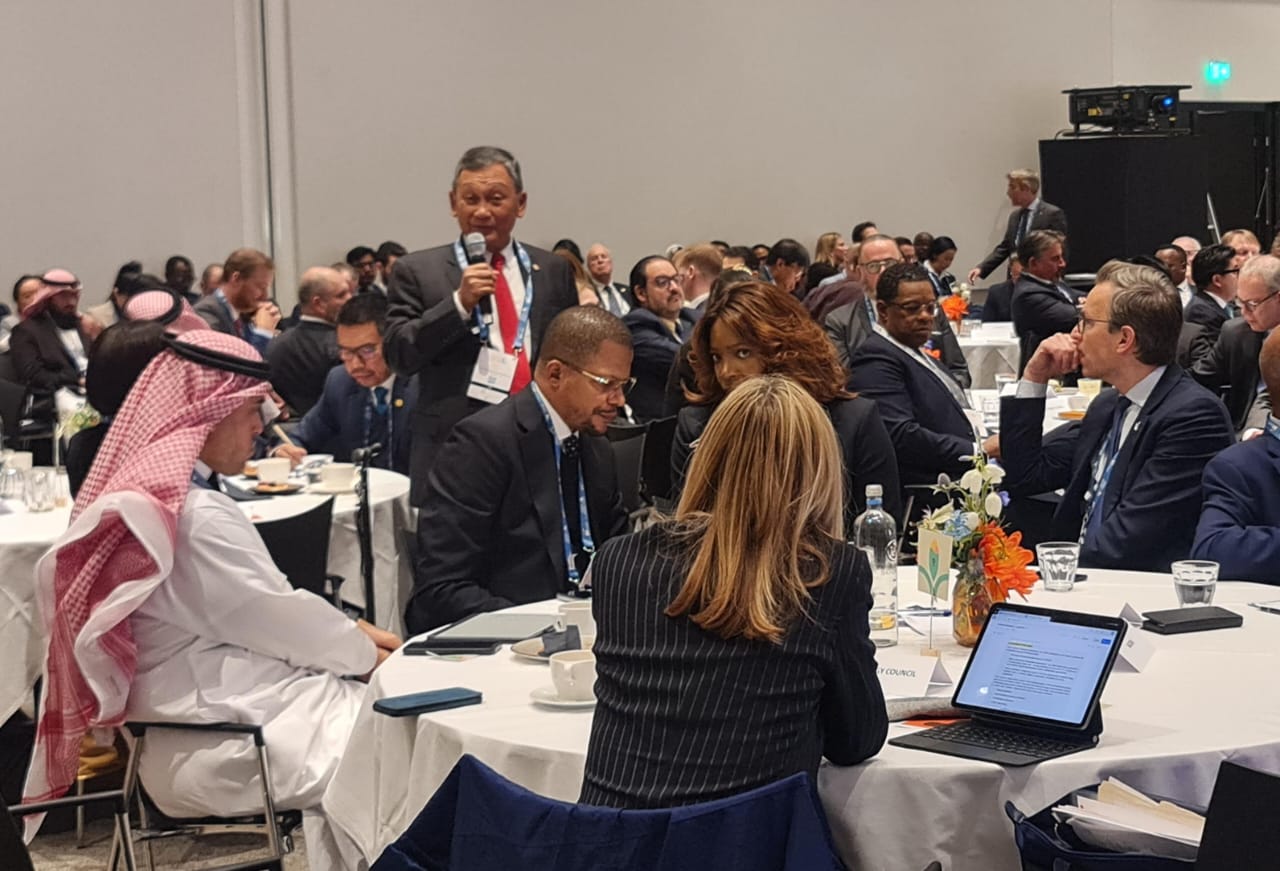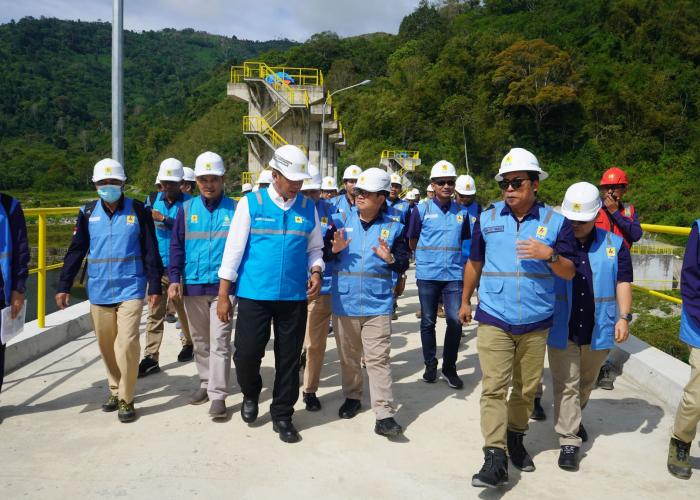Perovskite, New Mineral as Source of Electrical Energy in Future
MINISTRY OF ENERGY AND MINERAL RESOURCES
REPUBLIC OF INDONESIA
PRESS RELEASE
NUMBER: 179.Pers/04/SJI/2020
Date: 13 May 2020
Perovskite, New Mineral as Source of Electrical Energy in Future
The increasing consumption of energy along with depleting reserve of fossil energy have pushed scientists to offer solutions to meeting energy demands. The Perovskite mineral is considered capable of addressing the energy crisis problem faced especially by tropical countries, Indonesia, for example.
Perovskites can be used as base materials in solar-based power plants. Perovskites have higher solar absorption efficiency level and cost flexibility than silicon crystal-based photo voltaic (PV) panels.
"The main weakness of silicon PV panels is that they are highly inefficient; their efficiency rate is only about 7%-16%, and they depend a lot on placement orientation and weather condition. Silicon panels are made relatively thick and layered, not as thin film, to make them stronger and durable, but the drawback is the efficiency side must be sacrificed," said President Director of PT Pertamina EP, Nanang Abdul Manaf, as stated on his media social account, Tuesday (12/5).
The discovery of perovskites, Nanang continues, promises better results so that perovskites can become the prop that can beat silicon panels in terms of efficiency. "Panels with layers of perovskites thin film can absorb light from a wide range of wavelengths, and thus, are more productive in generating electricity compared to silicon PV panels," he said.
Latest research by Oxford University in 2018 shows that the efficiency rate of perovskites can reach up to 25%, in December 2018 the research even showed that the efficiency rate could reach 28%. Scientists have continued to develop perovskites for commercial, mass production since the initial research started in 2012.
Nanang considers the use of the sun as an energy source in Indonesia as the right step. He bases his opinion on the nature of the sun as an unlimited source of energy. "Every hour, the sun gives out energy equaling 430 quintillion (10 to the power of 18) Joules and over 410 quintillion (10 to the power of 18) Joules has been consumed throughout the year," he explained.
According to International Energy Agency (IEA), solar power supplied approximately 592 Giga Watt or tiny 2.2% of the global electricity consumption of 26,571 Giga Watt in 2018. After PV installation is booming, solar usage increases to 100 Giga Watt or 20% of the world's electricity consumption. Over 90% of PV panels installed are made from silicon crystals.
This is in line with the increasingly competitive price average of solar plants. According to the report of International Renewable Energy Agency (IRENA), solar power plants are highly competitive compared to power plants fueled by fossil energy, such as oil, gas, and coal, with average price down by 75% or below USD 0.10/KWh.
"This is of course a new chapter in human life, to leave behind fossil energy sources which we've used for over than a century. Welcome perovskites," Nanang said.
Meanwhile, Head of Bureau of Communication, Public Information Services, and Cooperation of Ministry of EMR, Agung Pribadi, explains the huge potential for solar energy development in Indonesia, as the country is recorded to have solar energy potential of 207.8 Giga Watt Peak (GWp) and realized usage 0.15 GWp.
In 2020, the additional capacity from New, Renewable Energy power plants is targeted at 933 MW with solar power plants contributes 78 MW. For this reason, the government continues to encourage optimum usage of solar energy through the involvement of all stakeholders.
"The use of solar energy as green energy that uses clean technology must become our choice and priority to support sustainability," said Agung.
Perovskite is a rare earth element (REE), which chemical compound is called calcium titanium oxide or chemical formula CaTiO3. First discovered in the Ural Mountains of Russia by Gustav Rose in 1839, the mineral was further studied by Victor Goldschmidt in 1926. (IY)
Head of Bureau of Communication, Public Information Services, and Cooperation
Agung Pribadi (08112213555)
Share This!





